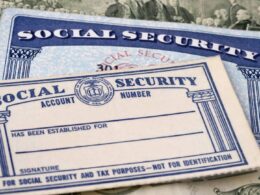Between their credit card balances, mortgages, auto loans, home equity lines of credit and student debt, Americans owe a record $18.2 trillion, according to a new quarterly report on household debt from the Federal Reserve Bank of New York.
Still, for the most part, borrowers are managing that debt relatively well — with one exception.
“Transition rates into serious delinquency have leveled off for credit card and auto loans over the past year,” Daniel Mangrum, research economist at the New York Fed, said in a statement. “However, the first batch of past due student loans were reported in the first quarter of 2025, resulting in a large jump in seriously delinquent borrowers.”
The delinquency rate for student loan balances spiked after a nearly five-year pause due to the pandemic, the New York Fed found. Nearly 8% of total student debt was reported as 90 days past due in the first quarter of 2025, compared to less than 1% a year earlier.
More from Personal Finance:
Wage garnishment for defaulted student loans to begin
What loan forgiveness opportunities remain under Trump
Is college still worth it? It is for most, but not all
Although the student loan delinquency rate is “likely to go up a little bit more,” it is “still comparable to what it was in 2020,” the New York Fed researchers said on a press call Tuesday.
However, in a blog post, the researchers noted that “the ramifications of student loan delinquency are severe.”
Currently, around 42 million Americans hold federal student loans and roughly 5.3 million borrowers are in default, according to the U.S. Department of Education. Another 4 million borrowers are in “late-stage delinquency,” or over 90 days past due on payments.
Among borrowers who are now required to make payments — not including those who are in deferment or forbearance or are currently enrolled in school — nearly one in four student loan borrowers are behind in their payments, the New York Fed found.
“For many, this had grave consequences for their credit standing,” the New York Fed researchers said.

The Education Department restarted collection efforts on defaulted student loans on May 5, which includes the garnishment of wages, tax returns and Social Security payments.
Until last week, the Education Department had not collected on defaulted student loans since March 2020. After the Covid pandemic-era pause on federal student loan payments expired in September 2023, the Biden administration offered borrowers another year in which they would be shielded from the impacts of missed payments. That on-ramp officially ended on Sept. 30, 2024 and delinquencies began appearing on credit reports in the first quarter of 2025.
As collection activity restarts, credit scores tumble
Both VantageScore and FICO reported a drop in average scores starting in February as early- and late-stage credit delinquencies rose sharply, driven by the resumption of student loan reporting.
The Federal Reserve Bank of New York also cautioned in a March report that student loan borrowers who are late on their payments could see their credit scores sink by as much as 171 points as collection activity resumes.
A separate analysis by TransUnion found that consumers who faced default in recent months have seen their credit scores fall by 63 points, on average. For super prime borrowers — or those with credit scores above 780 — who were seriously delinquent, scores sank as much as 175 points. Credit scores typically range between 300 and 850.
Source link









